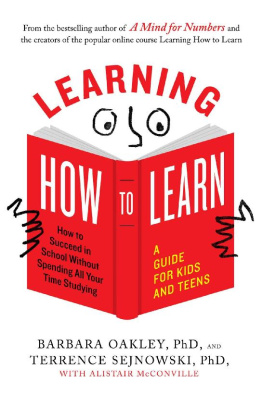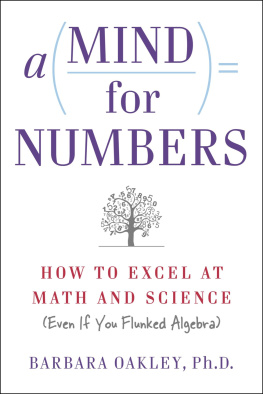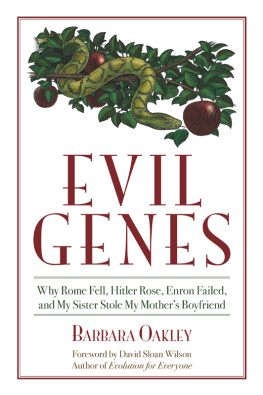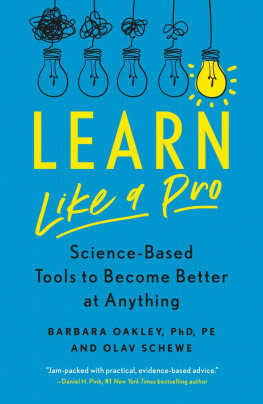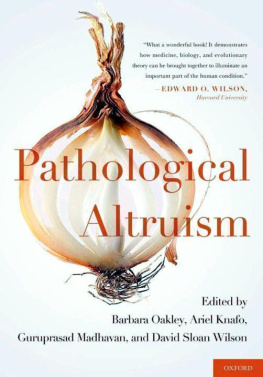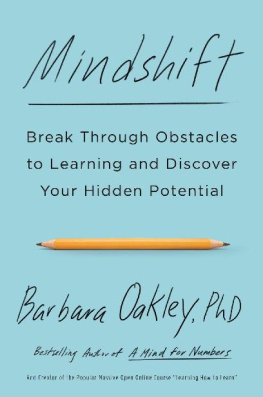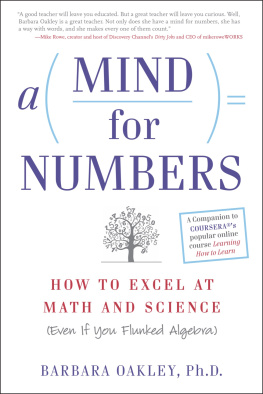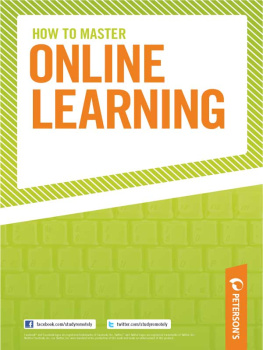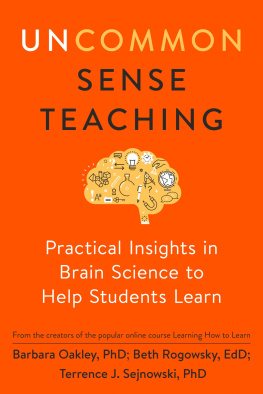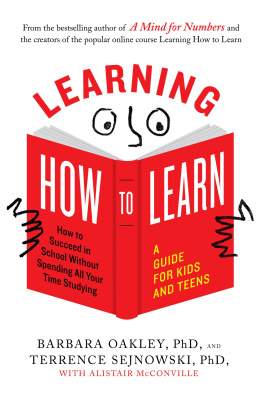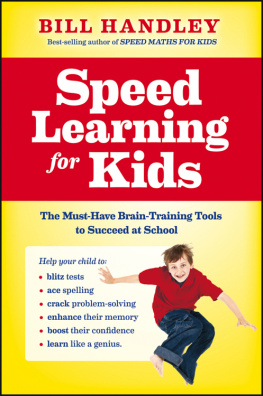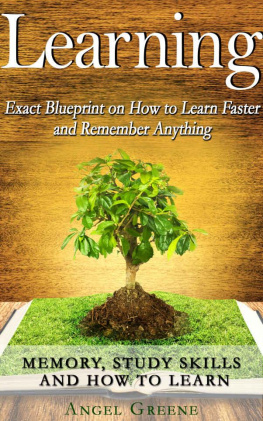Advance Praise for LEARNING HOW TO LEARN
The authors neuroscience-grounded, yet real-life, approach will be of value to learners of any age.
Adam Gazzaley, MD, PhD, Professor in Neurology, Physiology, and Psychiatry at the University of California, San Francisco
In this highly readable and lively book, the authors illustrate how the brain and behavioral dynamics underlie effective learningand they do so in a way that young learners will find understandable and even entertaining.
Robert A. Bjork, Distinguished Research Professor of Psychology at the University of California, Los Angeles
Learning How to Learn shows kids and teens that a little knowledge of how their brain works goes a long way in helping them improve their learning and studying success. This unique book is full of fun learning strategiesI highly recommend it!
Paula Tallal, PhD, Board of Governors Professor Emeritus of Neuroscience at Rutgers University and cofounder of Scientific Learning Corporation
I devoured Learning How to Learn in three sittings (I needed time for diffuse thinking, active recall, and sleep). A terrific book!
Jeff Sandefer, cofounder of Acton School of Business

An imprint of Penguin Random House LLC
375 Hudson Street
New York, New York 10014
Copyright 2018 by Barbara Oakley and Terrence Sejnowski
Penguin supports copyright. Copyright fuels creativity, encourages diverse voices, promotes free speech, and creates a vibrant culture. Thank you for buying an authorized edition of this book and for complying with copyright laws by not reproducing, scanning, or distributing any part of it in any form without permission. You are supporting writers and allowing Penguin to continue to publish books for every reader.
constitute an extension of this copyright page.
TarcherPerigee with tp colophon is a registered trademark of Penguin Random House LLC.
Library of Congress Cataloging-in-Publication Data
Names: Oakley, Barbara A., 1955- author. | Sejnowski, Terrence J. (Terrence Joseph), author. | McConville, Alistair, author.
Title: Learning How to Learn : How to Succeed in School Without Spending All Your Time Studying / Barbara Oakley, PhD, and Terrence Sejnowski, PhD ; With Alistair McConville ; With illustrations by Oliver Young.
Description: New York : TarcherPerigee, [2018] | Includes bibliographical references and index. |
Identifiers: LCCN 2018018495 (print) | LCCN 2018024504 (ebook) | ISBN 9780525504467 | ISBN 9780143132547 (paperback)
Subjects: LCSH: Learning strategiesProblems, exercises, etc. | Study skillsStudy and teaching. | StudentsTime management. | BISAC: JUVENILE NONFICTION / School & Education. | JUVENILE NONFICTION / Study Aids / General. | JUVENILE NONFICTION / Science & Nature / Biology.
Classification: LCC LB1066 (ebook) | LCC LB1066 .O35 2018 (print) | DDC 370.15/23dc23
LC record available at https://lccn.loc.gov/2018018495
p. cm.
While the author has made every effort to provide accurate telephone numbers, internet addresses, and other contact information at the time of publication, neither the publisher nor the author assumes any responsibility for errors or for changes that occur after publication. Further, the publisher does not have any control over and does not assume any responsibility for author or third-party websites or their content.
Version_2
CONTENTS
A NOTE TO PARENTS AND TEACHERS
W elcome to our book. Youre helping a younger person to learn more effectively, which means were already on the same team!
Some of the ideas in this book were discussed in Barbs bestselling A Mind for Numbers. Many readers felt that the ideas were so simple, and so practically useful, that they should be shared with younger audiences. And we have heard from thousands of people that these ideas are useful for learning all subjects, not just math.
So this book is intended for tweens and teensalthough adults will also find a treasure trove of new and practical ideas here. Understanding just a little bit about how the brain works can make learning more fun and less frustrating.
There are several ways to use this book. Some young adults may wish to read it on their own. They can talk with their friends about the key ideas to help cement them in their minds. Some young adults (and adults!) may be tempted to skim through the book, thinking theyll get everything if they just read from cover to cover. Nothing could be further from the truth! Active involvement is keythe exercises are helpful only if they are completed. The book is best read with a notebook at the side, to take notes, answer questions, and make doodles with key insights. With young skimmers, the more an adult can dip in, question, and interact, the more will be gained.
If you are a parent or grandparent, aunt or uncle, we suggest that your young person might read the book out loud to you. Generally, a half hour of reading at a stretch is a good length. (Younger children may read for a shorter time.) Reading aloud is a fun adventure where you can learn together, as a family.
If you are a teacher, you may wish to read the book together with your students. Or you may have a silent reading period, followed by a shared discussion. You will find that this book gives you a shared vocabulary to help you teach other subjects.
Younger is better when it comes to learning about learning, as it allows for more years to use the tools. It also opens doors for the great new careers that are emerging with modern-day changes.
Thanks for joining us on this learning adventure. Lets dive in!
Barb Oakley, Terry Sejnowski, and Al McConville
CHAPTER 1
THE PROBLEM WITH PASSION
H i, my names Barb. Great to meet you!
I have a secret. When I was growing up, I was sometimes a terrible student. Sure, I was fine in subjects I liked. But otherwise, forget it.
Everybody told me to follow my passion. I figured that meant, Do what you like, not what you dont like. That sounded like good advice to me. I hated math and science, so I avoided those subjects as if they were poison. When I had to take those courses, I did badly, or I just plain failed.
Im now a professor of engineering. Surprised? Engineers need a deep knowledge of math and science. Im now really good at math and science, and I love them. How did I do it? I discovered the secrets of learning well.
This is a picture of meBarb Oakley. I learned that I could learn much more than Id ever thought I could.
This is a book about how to become a successful learner. Its written for tweens and teens, but the lessons in it apply to everyone. And they relate to all kinds of learning. Whether you are interested in soccer (better known as football around the world!), math, dance, chemistry, riding a unicycle, learning another language, getting better at video games, or understanding the physics of how a ball bounces, this book is for you.
Brains are amazing. Theyre the most sophisticated gadgets in the universe. They change their structure depending on what you do with them.

